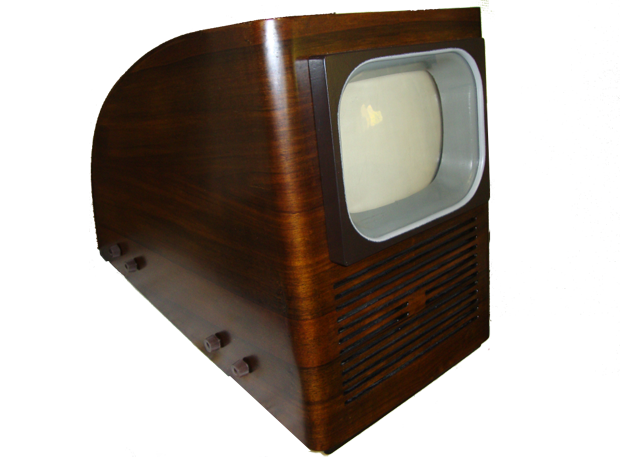
A Philips TX594U is an experimental TV built in 1949. This device was used for test broadcasts in and around Eindhoven in the Netherlands
An original cabinet to borrow for weights and measures. Other than that, this cabinet was completely empty.
Here's the hole for the picture tube, it's still too small, but this was more for production purposes.
The construction of the TX400 line transformer, which would later appear, is that it could never work in this device.
Now we will start building the receiver. Because the design was according to the American system, I have adjusted the frequencies of the mf coils so that we can receive the European ccir standard.
We start with the audio part, namely with the Foster Seeley detector. I set the base frequency to 22Mhz
At this point I found out that the high voltage started badly. And that I had forgotten to connect the aquadag layer of the picture tube.
Below the signal that enters the TV via channel 4. Above the video that comes out of the video amplifier and goes to the picture tube.
A test under the signal that enters the TV via channel 4. above what goes out of the video amplifier to the picture tube.
Now the point has come that I was done with the difficult start-up of the high voltage. A borrowed chassis with the original line transformer gave the following result. High voltage starts normally synchronization much more stable image width is now adjustable.
The original line transformer has a completely different construction than the TX400 and here the pulses have been measured for a copy of the original transformer.
The next line transformer. We made the line transformer in two parts where the primary slides into the secondary coil. this was done so as not to rewind each coil.
Because the line transformer is in a can, the components cannot be too large, so we made capacitor blocks for the cascade.
And then came the testing in transformer oil. Transformer oil has a different dielectric constant than air where I had removed 100 windings, they now had to be added again. My measurement with the tone generator at 15khz was just right.
And now here the image with the self-built line transformer and we start with a new problem, the vertical linearity.
The vertical linearity is fixed. And to change it by adjusting a resistance value. It was not possible to get it right with the previous deflection yoke. Later Philips made another deflection yoke for the TX594U which was also used in the first TX400U. We also thought we make a deflection yoke, see the image here.
And if you have arrived here please realize that the deflection yoke is self made the focus coil is a shortened version of the TX400U with a new coil and core. The line and grid transformer are also self made.


